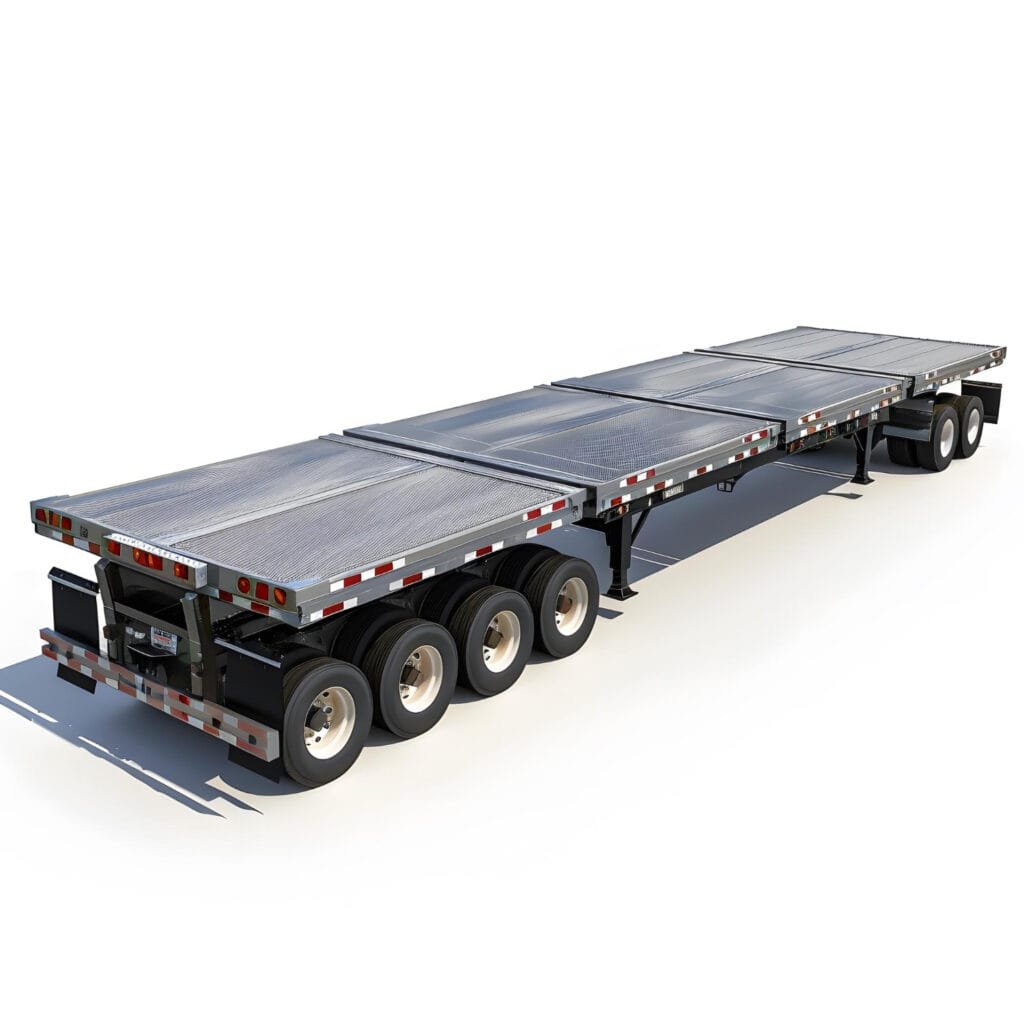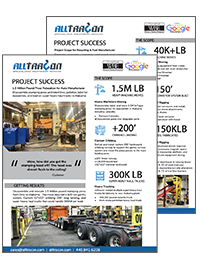How to Choose the Right Trailer for Heavy Equipment Transport
Transporting heavy equipment requires meticulous planning and the right resources. Selecting the appropriate trailer is crucial to ensuring the safety, efficiency, and cost-effectiveness of the transport process. This comprehensive guide will cover the various factors to consider when choosing a trailer for heavy equipment transport, the types of trailers available, legal and safety considerations, and practical tips for making the best choice.
Factors to Consider
1. Equipment Specifications
Understanding the specifications of the equipment to be transported is the first step in selecting the right trailer. Key details include:
Weight: The total weight of the equipment will determine the load capacity required for the trailer.
Dimensions: Length, width, and height of the equipment will influence the type of trailer and any necessary permits.
Shape and Center of Gravity: Unusual shapes or high centers of gravity may require specialized trailers and securing methods.
2. Distance and Route
The distance and route of transport impact the choice of trailer:
Distance: Long-distance hauls may require trailers with enhanced durability and comfort features.
Route: Routes with tight turns, narrow roads, or low bridges may necessitate specific trailer types or route planning.
3. Terrain and Environment
Consider the terrain and environmental conditions:
Terrain: Rough, uneven, or off-road conditions may require trailers with reinforced structures and better suspension systems.
Weather: Weather conditions, such as rain, snow, or extreme heat, can affect trailer choice and the need for additional protective measures.
4. Legal and Regulatory Requirements
Compliance with legal and regulatory requirements is crucial:
Permits: Oversize or overweight loads often require special permits.
Road Regulations: Understanding state and local road regulations ensures legal compliance.
Safety Standards: Adhering to safety standards, such as those set by the Department of Transportation (DOT), is mandatory.
Types of Trailers
1. Flatbed Trailers
Flatbed trailers are versatile and commonly used for transporting heavy equipment:
Advantages: Open design allows for easy loading and unloading, suitable for a variety of equipment.
Disadvantages: Lack of sides and roof offers no protection from weather and requires secure strapping.
2. Step Deck Trailers
Step deck trailers, also known as drop deck trailers, have a lower deck height:
Advantages: Accommodates taller equipment, easier loading with ramps.
Disadvantages: Limited by weight capacity compared to other trailer types.
3. Lowboy Trailers
Lowboy trailers have a low deck height, making them ideal for very tall and heavy equipment:
Advantages: High weight capacity, lower center of gravity for stability.
Disadvantages: More expensive, may require permits for height and weight.
4. Double Drop Trailers
Double drop trailers have two drops in the deck height, providing an even lower middle section:
Advantages: Allows transport of extremely tall equipment, very stable.
Disadvantages: Limited to specific types of equipment, higher cost.
5. Extendable Trailers
Extendable trailers can be lengthened to accommodate longer loads:
Advantages: Versatile for varying equipment lengths, can handle oversized loads.
Disadvantages: Complex to operate, requires careful planning and skilled drivers.
6. Removable Gooseneck Trailers (RGNs)
RGNs have a detachable front end, allowing equipment to be driven onto the trailer:
Advantages: Ideal for self-propelled equipment, high weight capacity.
Disadvantages: More expensive, may require additional permits.
Legal and Safety Considerations
1. Load Securing
Proper load securing is essential for safety and compliance:
Tie-Downs: Use chains, straps, and binders rated for the load’s weight.
Positioning: Ensure the load is centered and evenly distributed.
Inspection: Regularly inspect securing devices during transport.
2. Permits and Documentation
Ensure all necessary permits and documentation are in place:
Oversize/Overweight Permits: Obtain permits for loads exceeding standard dimensions or weight limits.
Route Surveys: Conduct route surveys to identify potential obstacles and plan accordingly.
Insurance: Verify that insurance coverage is adequate for the load being transported.
3. Safety Measures
Implement safety measures to protect the load, drivers, and other road users:
Driver Training: Ensure drivers are trained and experienced in handling heavy equipment transport.
Escort Vehicles: Use escort vehicles when required for oversized loads.
Lighting and Signage: Equip the trailer with proper lighting and signage to enhance visibility.
Practical Tips for Choosing the Right Trailer
1. Assess Equipment Needs
Evaluate the specific needs of the equipment being transported:
Special Features: Identify any special features or requirements, such as winches or ramps.
Multiple Loads: Consider if the trailer will be used for multiple types of equipment.
2. Budget Considerations
Determine your budget and consider both initial and long-term costs:
Purchase vs. Rental: Decide whether to purchase or rent the trailer based on frequency of use.
Maintenance: Factor in maintenance costs and potential downtime.
3. Consult Experts
Consult with industry experts and professionals:
Dealers and Manufacturers: Seek advice from trailer dealers and manufacturers to find the best fit.
Experienced Movers: Learn from the experiences of other heavy equipment movers.
4. Inspect and Test
Thoroughly inspect and test the trailer before committing:
Condition: Check the trailer’s condition, including tires, brakes, and structural integrity.
Compatibility: Ensure compatibility with your equipment and towing vehicle.
Conclusion
Choosing the right trailer for heavy equipment transport involves careful consideration of equipment specifications, transport conditions, legal requirements, and safety measures. By understanding the various types of trailers available and their specific advantages, you can make an informed decision that ensures the safe and efficient relocation of your heavy equipment. Consulting with experts, adhering to regulations, and thorough planning are key to a successful transport operation.



